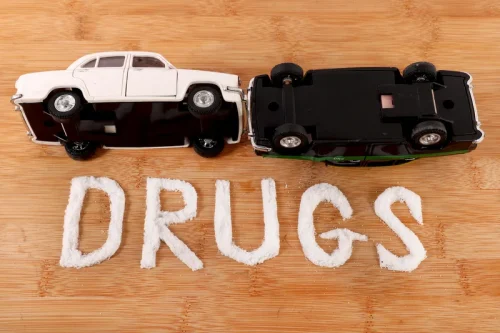
Recovery will not be easy at this point, but it will be worth the work. Now is the time to line up support from addiction specialists, mental health professionals, friends and family, and others living with an alcohol use disorder. Treating the alcohol use disorder, along with the health problems caused by chronic, heavy drinking, may be possible.
Alcohol-Free Beer Effects on Cirrhosis of the Liver

U.S. deaths from causes fully due to excessive alcohol use increased during the past 2 decades. The reliable nationwide health care registers in Denmark, Finland and Sweden provide a unique opportunity to study mortality in people diagnosed with AUD. Despite the recent increase, cirrhosis remains a relatively minor cause of death for young Americans, accounting for only 1.4 percent of total deaths in the age range. But it’s much more significant for young Native Americans, accounting for 6.3 percent of deaths.

How these deaths were estimated
Explore topics related to alcohol misuse and treatment, underage drinking, the effects of alcohol on the human body, and more. The end-stage alcoholic suffers from a host of physical problems, including severe damage to vital organs such as the liver. Alcohol, in fact, is the cause of more than 50 percent of liver-disease related deaths in this country, and alcohol-related liver disease costs more than $3 billion annually. Those in the end stage of alcoholism, or late or deteriorative stage, are consumed by their drinking.

Age-specific mortality rates
On average, drunk driving kills around 28 people per day in the U.S. Excessive alcohol use can harm people who drink and those around them. You and your community can take steps to improve everyone’s health and quality of life. They include deaths where the primary (or underlying) cause of death listed on the death certificate was one of 58 alcohol-related causes. While the new study focused on excessive alcohol use, it didn’t measure the harms of all levels of alcohol use.
- Blackout episodes, where the individual does not remember what they’ve said or done while drinking, may occur.
- From the patient perspective, limited understanding of what constitutes problematic drinking and attitudes towards seeking treatment can hinder recognition of the need for help.
- It’s common at this point for alcoholics to have lost their jobs as well their friends and family.
- Discover the impact alcohol has on children living with a parent or caregiver with alcohol use disorder.
Alcohol death rates for AIAN people are by far the highest–5 times higher than death rates for White people, the racial group with the next highest prevalence. Across age groups, people aged 45 to 64 have the highest alcohol death rate, followed by 65+. Death rates in males are more than double that of females and people who reside in rural areas have death rates higher than those who live in urban areas (Figure 2). Alcohol deaths have steadily climbed over the past decade, a trend that accelerated during the pandemic (Figure 1). When adjusted for population growth and age, the alcohol death rate has risen by 70% from 2012 to 2022, moving from 7.97 to 13.53 alcoholism symptoms deaths per 100,000 people. Although deaths fell somewhat in 2022, they remain far higher than a decade ago.

Addiction/Alcoholism
- The US Centers for Disease Control and Prevention said there were about 178-thousand deaths from excessive alcohol use from 2020 through 2021, which is a 29 percent increase from just five years earlier.
- On a national level, trends are broadly similar, whether the data are analysed by year of occurrence or year of registration.
- The condition, which is sometimes called wet brain, is characterized by eye movement disorders, loss of muscle coordination, confusion and memory issues.
- There are no published studies comparing deaths attributed to SUDAM with those attributed to SADS.
- Middle-stage alcoholics may become irritable or angry if confronted about their drinking.
Deaths caused by diseases known to be a direct consequence of alcohol, by age, sex, and region. Registered total alcohol consumption in litres pure alcohol per capita in Denmark, Finland and Sweden from 1987 to 2006. Tapper, a liver specialist and assistant professor of medicine at the University of Michigan Medical School, tried to get the patient to stop drinking.
- This study will describe the characteristics of people who meet the criteria for SUDAM and compare them to non-alcohol drinkers diagnosed with SADS in order to explore potential discriminatory factors between the two groups.
- Mortality rates are calculated using the number of deaths and mid-year population estimates provided by the Office for National Statistics (ONS) Population Estimates Unit.
- By the time they’ve reached the third and final stage of alcoholism, drinking has consumed their lives.
- Being able to better discriminate between these two diagnoses of exclusion in heavy alcohol users may be useful in initiating screening of family members for potentially fatal ion channelopathies.
Many thanks to the Cardiac Risk in the Young (CRY) team members based at St George’s, University of London, for their assistance during the completion of this study. “We hypothesize that there may be a loss of opportunity, and the psychological burden that comes with that may have driven some of those patients to abusive drinking.” The reason for the spike is unclear, but Dr. Neehar Parikh, a liver specialist at the University of Michigan Medical School and Tapper’s co-author, has a theory. Some people may benefit from talking with family, friends, how do people die of alcoholism and loved ones.

Strong cravings for alcohol are typical at this stage, and drinking isn’t just for enjoyment anymore. Because the body has adapted to deal with an alcohol-rich environment, the alcoholic physically needs it to avoid the painful symptoms of withdrawal. End-stage alcoholism, or late-stage alcoholism, is the final stage of an alcohol use disorder, resulting in serious physical and mental conditions as well as other life consequences from years of alcohol misuse. When a person has developed an alcohol use disorder (AUD), they begin to develop a tolerance to alcohol and exhibit a variety of behaviors that have a negative impact on their health and personal and professional lives. At this point, the drinker depends on alcohol to feel normal and may experience alcohol withdrawal symptoms or negative feelings when they are not drinking.
